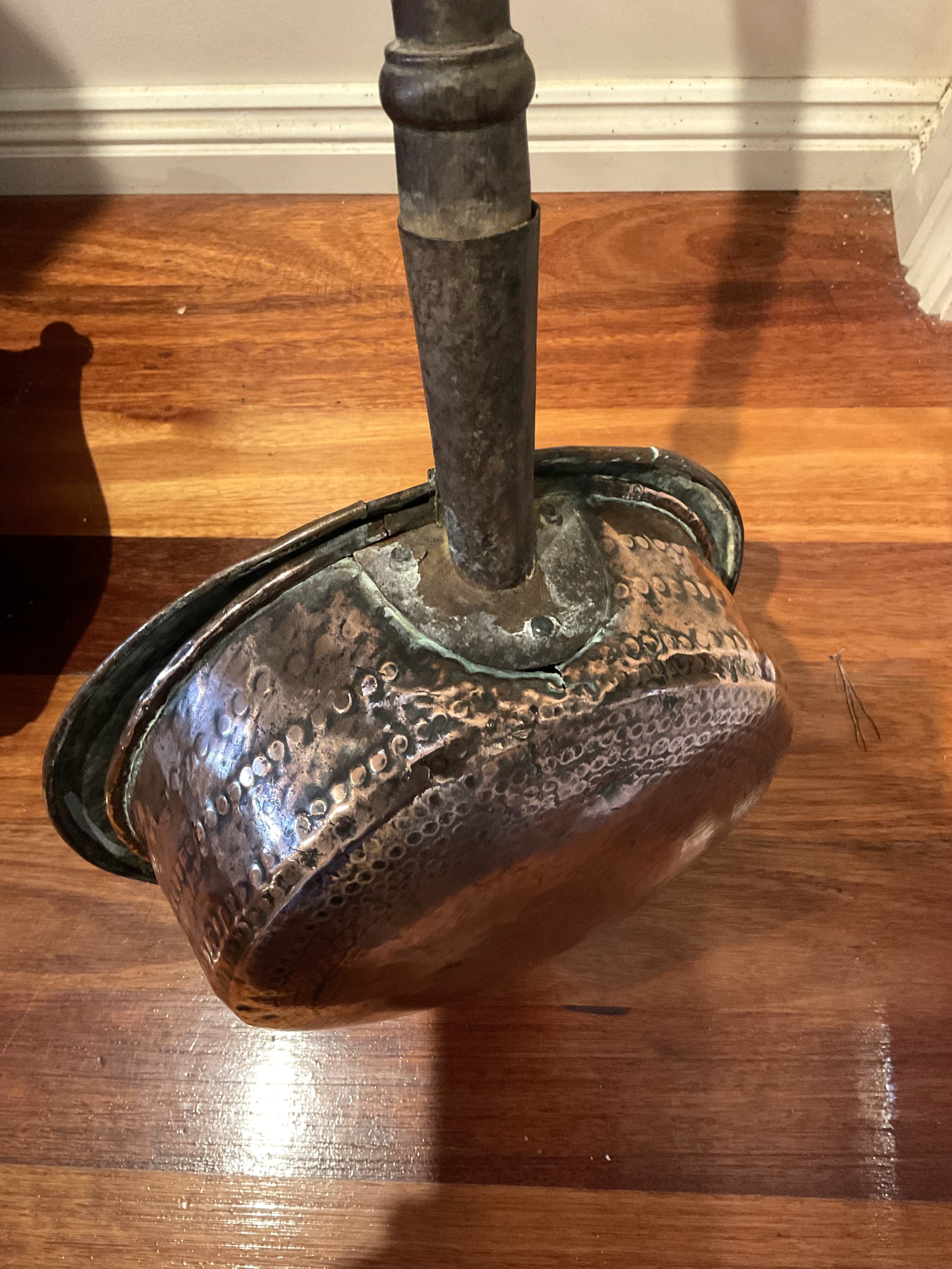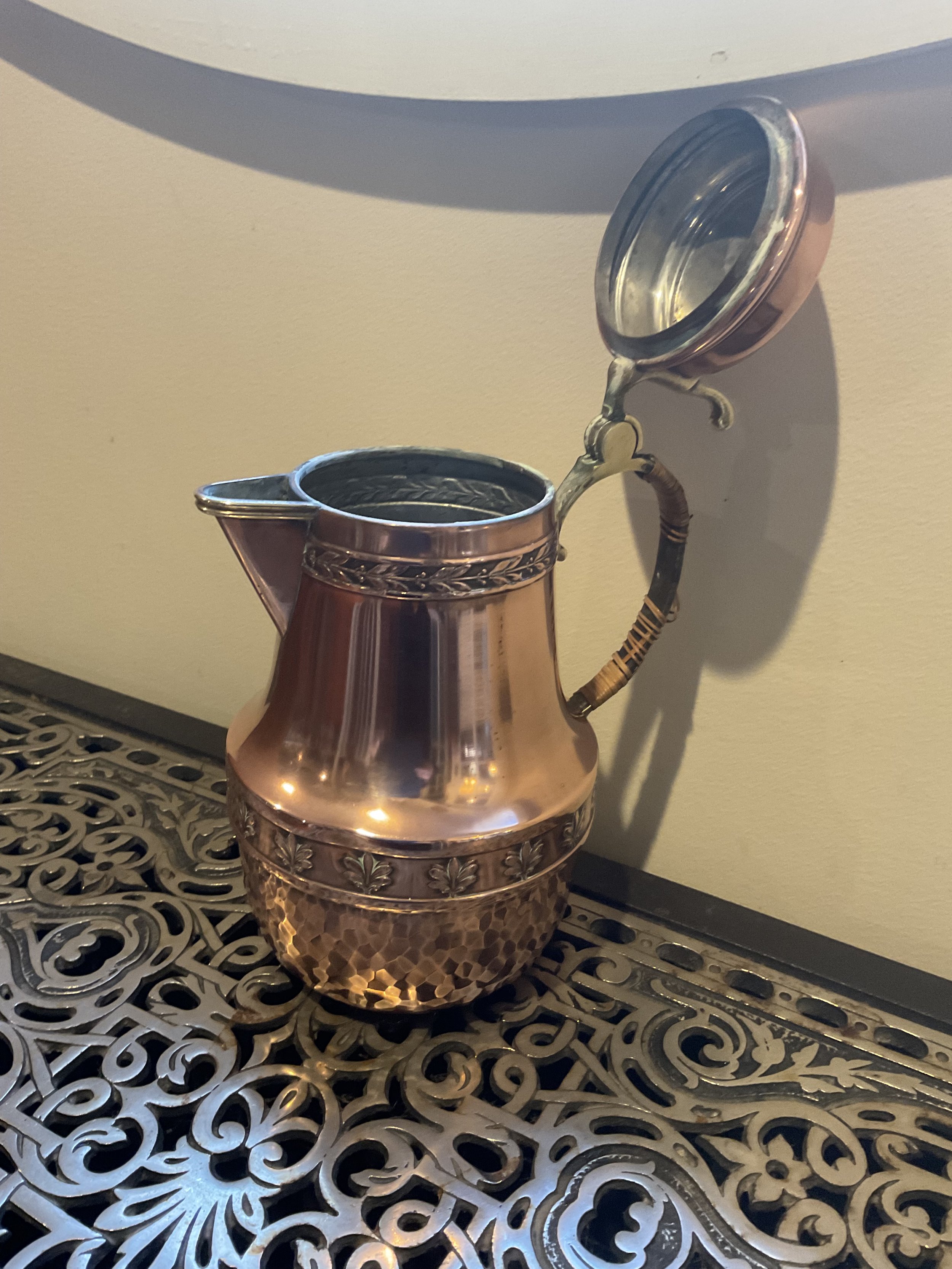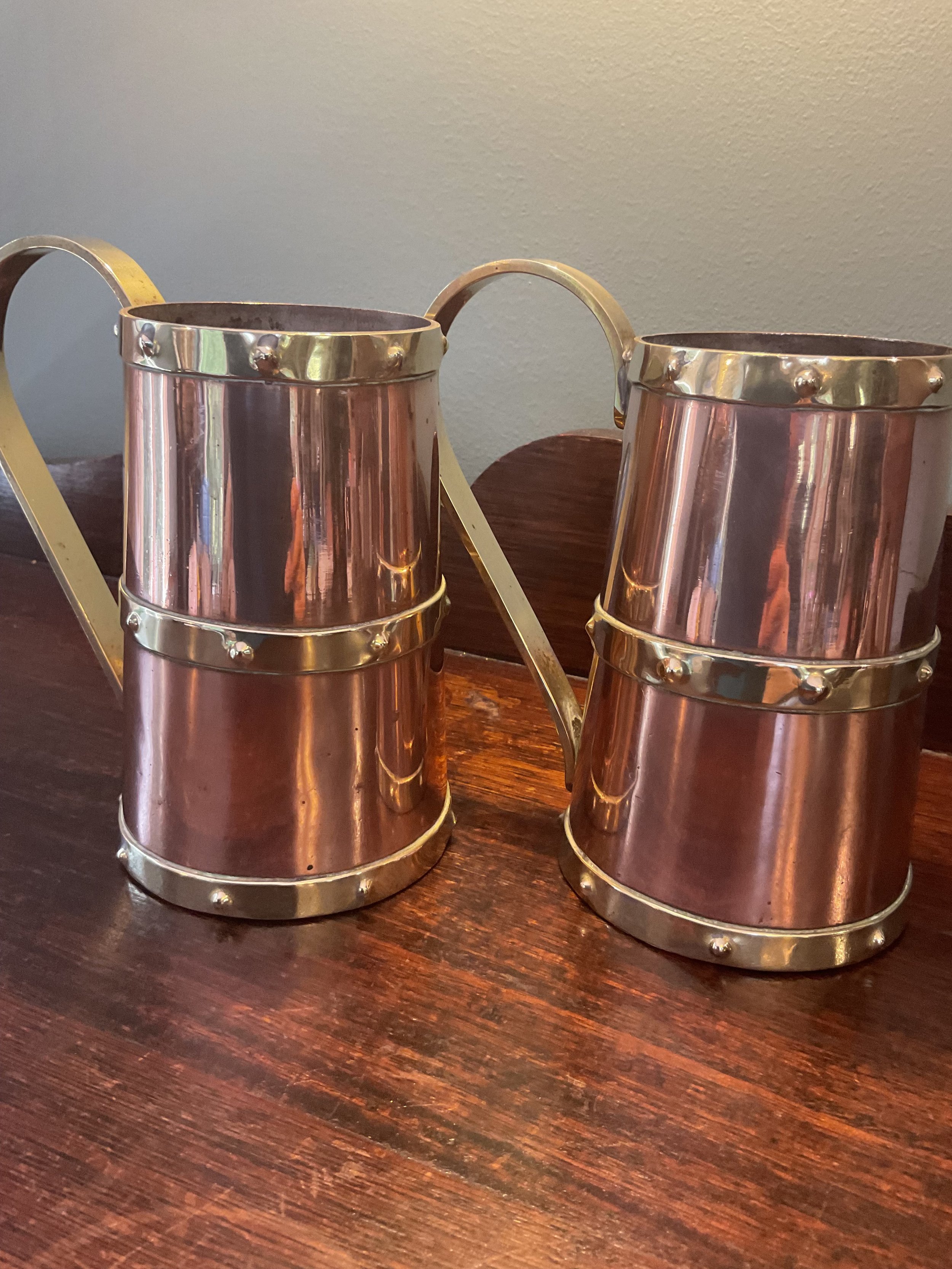 Image 1 of 8
Image 1 of 8

 Image 2 of 8
Image 2 of 8

 Image 3 of 8
Image 3 of 8

 Image 4 of 8
Image 4 of 8

 Image 5 of 8
Image 5 of 8

 Image 6 of 8
Image 6 of 8

 Image 7 of 8
Image 7 of 8

 Image 8 of 8
Image 8 of 8









French Antique Copper Bed Warming Pan
This French bed warmer (or warming pan) has been made from copper and timber. It has been hand beaten and appears to be quite old. Around the edge of the copper pan a hand beaten pattern has been created. The top of the lid has been beaten into a pin wheel design. There are also holes impressed into the lid, most likely designed to let air in so that the embers remained alight. The timber handle has been turned and a narrow leather strap is in place at the end of the handle to facilitate hanging.
The earliest warming pans date back to the 17th Century. Before the introduction of warming pans, hot bricks or stones that had been heated by the fire were wrapped in cloth and slipped between the sheets to ward off the cold.
Warming pans were made from silver, copper or brass. They were filled with hot embers from the fire and the long handle enabled the pan to be placed between the bed clothes where it was vigorously rubbed up and down the bed before someone got in. The bed warmer became a household item in countries with cold winters, especially Europe. They were valuable family possessions and were handed down through the generations. Due to the severity of the winters, warming pans were used not only to heat beds but also as a means to ward off the damp. They were stored by the fire during the day, either hanging on a wall or standing in a corner. Some pans had holes in them. These holes were designed to keep the embers smouldering but they made the bed clothes smell of smoke and they increased the risk of fire. At the time, there were many health warnings from doctors regarding the dangers of noxious fumes. It has been recorded that Elizabeth 1 had a bed warmer adorned with diamonds.
“A copper warming pan is indispensable to a household. Take care to have a big enough quantity of embers, above all some red cinders, when you want to heat a bed. Get it smouldering well before you use it, otherwise the fire will soon go out and the bed will not warm up. You must move the warming pan constantly to avoid scorching the sheets”.
Taken from ‘Cora Millet-Robinets Domestic Economy’ 1853
This warming pan is in good condition considering its age. It would look stunning hanging on a wall next to a fireplace or wood heater, or indeed, propped up in a corner somewhere. In fact, the warmth of the copper would enhance any decor. It measures 10 cms in height, 29 cms in diameter across the top of the pan, 86 cms in length and the handle is 59 cms long.
This French bed warmer (or warming pan) has been made from copper and timber. It has been hand beaten and appears to be quite old. Around the edge of the copper pan a hand beaten pattern has been created. The top of the lid has been beaten into a pin wheel design. There are also holes impressed into the lid, most likely designed to let air in so that the embers remained alight. The timber handle has been turned and a narrow leather strap is in place at the end of the handle to facilitate hanging.
The earliest warming pans date back to the 17th Century. Before the introduction of warming pans, hot bricks or stones that had been heated by the fire were wrapped in cloth and slipped between the sheets to ward off the cold.
Warming pans were made from silver, copper or brass. They were filled with hot embers from the fire and the long handle enabled the pan to be placed between the bed clothes where it was vigorously rubbed up and down the bed before someone got in. The bed warmer became a household item in countries with cold winters, especially Europe. They were valuable family possessions and were handed down through the generations. Due to the severity of the winters, warming pans were used not only to heat beds but also as a means to ward off the damp. They were stored by the fire during the day, either hanging on a wall or standing in a corner. Some pans had holes in them. These holes were designed to keep the embers smouldering but they made the bed clothes smell of smoke and they increased the risk of fire. At the time, there were many health warnings from doctors regarding the dangers of noxious fumes. It has been recorded that Elizabeth 1 had a bed warmer adorned with diamonds.
“A copper warming pan is indispensable to a household. Take care to have a big enough quantity of embers, above all some red cinders, when you want to heat a bed. Get it smouldering well before you use it, otherwise the fire will soon go out and the bed will not warm up. You must move the warming pan constantly to avoid scorching the sheets”.
Taken from ‘Cora Millet-Robinets Domestic Economy’ 1853
This warming pan is in good condition considering its age. It would look stunning hanging on a wall next to a fireplace or wood heater, or indeed, propped up in a corner somewhere. In fact, the warmth of the copper would enhance any decor. It measures 10 cms in height, 29 cms in diameter across the top of the pan, 86 cms in length and the handle is 59 cms long.
Not suitable for delivery via Australia Post. Collection by appointment. Please make contact if you would like to arrange another type of delivery.









































